<< Return to List
The Partnership for a Drug-Free America
Summary:
The Partnership for a Drug Free America has declared war on methamphetamines. Experts say meth may become the most widespread, damaging drug to ever hit the US, not only in the way the drug wrecks the bodies and lives of users, but also through collateral damage suffered by schools, real estate, air, water, taxes, healthcare and more.
Body:
Problem: How do you mobilize communities against drugs?
Solution: Raise awareness of drug prevalence through non-traditional formats.
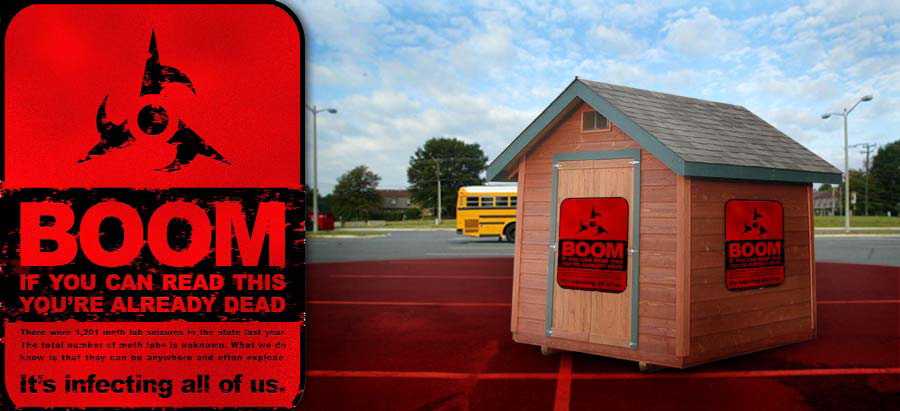
BACKGROUND:
The Partnership for a Drug Free America has declared war on methamphetamines. Experts say meth may become the most widespread, damaging drug to ever hit the US, not only in the way the drug wrecks the bodies and lives of users, but also through collateral damage suffered by schools, real estate, air, water, taxes, healthcare and more.
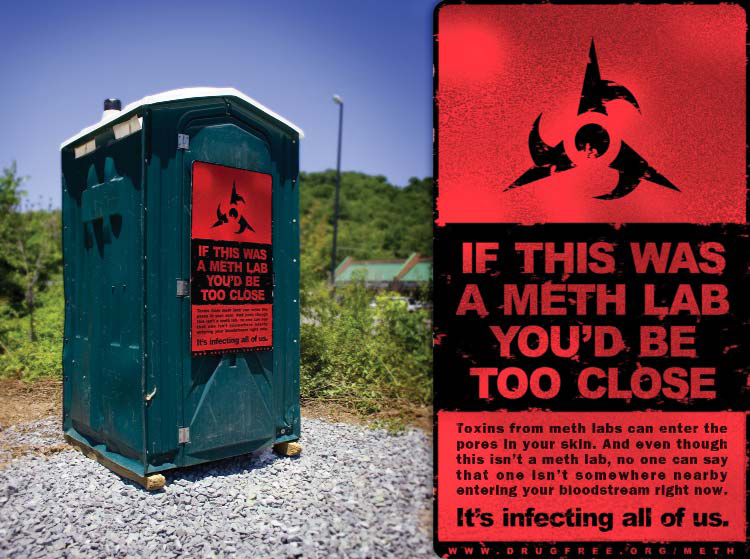 In past years, the Partnership for a Drug Free America has reached out to drug users and their parents, friends, teachers and anyone else who might know a drug user with a traditional message: drugs are bad, and you (or someone you care about) shouldn’t use them. The Partnership also had consistently used only the most traditional of media – television, radio and print.
In past years, the Partnership for a Drug Free America has reached out to drug users and their parents, friends, teachers and anyone else who might know a drug user with a traditional message: drugs are bad, and you (or someone you care about) shouldn’t use them. The Partnership also had consistently used only the most traditional of media – television, radio and print.
This campaign, however, involved a unique objective and target audience that could best be served by nontraditional out of home media.
OBJECTIVE:
The effects of meth are most devastating in rural America, places where people still take pride in their towns. The Partnership’s strategy was to target the residents of these communities and educate them about the collateral damage meth can have on a community as a whole. The objective was to motivate these residents to take initiative, form coalitions, raise money, contact their city representatives, and take decided action to defeat this drug before it defeated them.
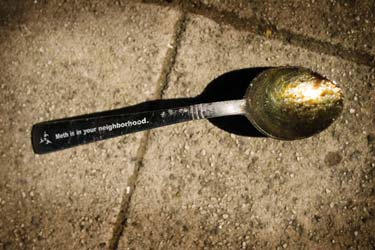 STRATEGY:
STRATEGY:
The campaign theme, “Infected by Meth,” was chosen to describe the depth of impact meth has on a community. But the execution of the creative had to be innovative in order to make those who don’t take meth – and may not currently know anyone does – believe that they and their town could be drastically impacted by the drug.
The message needed interrupt their daily lives, making the imminent danger real. Therefore, the very place and way a person encountered the message would be every bit as important as the message itself.
Out of home was the natural choice. Ideas and executions were designed so residents would encounter them in places that could not be ignored: the Friday night high school football game, the community picnic, while walking their second-grader to the school bus, or on their way to pick up their mail.
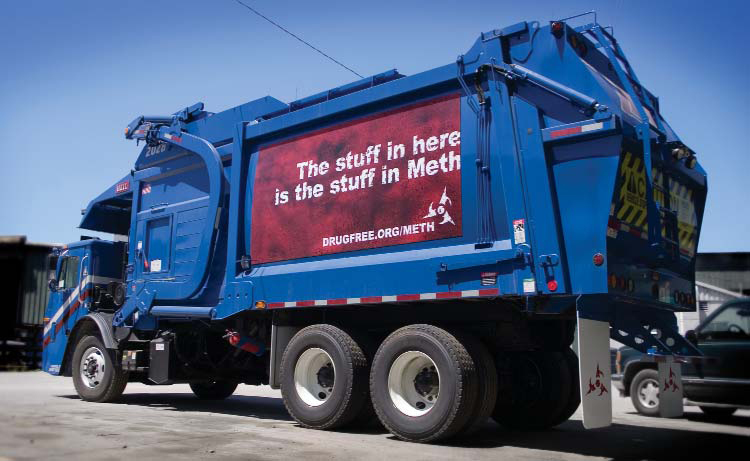 PLAN DETAILS:
PLAN DETAILS:
Matching the campaign objective, the media plan “activated” small town anti-drug coalitions to produce and place the executions around their community. A crew of about 25 townspeople, including the mayor and sheriff, assisted in strategically placing campaign elements around town during a community picnic, ensuring visibility by the majority of residents over a four-day period.
Signs were placed on Port-a-Pottys. Burned spoons were left on doorsteps. The water fountains at city halls were graphically altered. Cardboard cutouts of “employees” stood behind empty counters at the DMV. Shattered mirrors, graffiti-painted buildings, and message-emblazoned garbage trucks appeared everywhere, all ready to infect a small town with a big message.
RESULTS:
Since the launch of this campaign, there has been a high demand from coalitions in other local communities to bring a similar campaign to their towns. The Partnership also decided to turn this local campaign into a national effort so the message can infiltrate and impact towns across the country, providing the Partnership with ground-level troops in its war on meth.
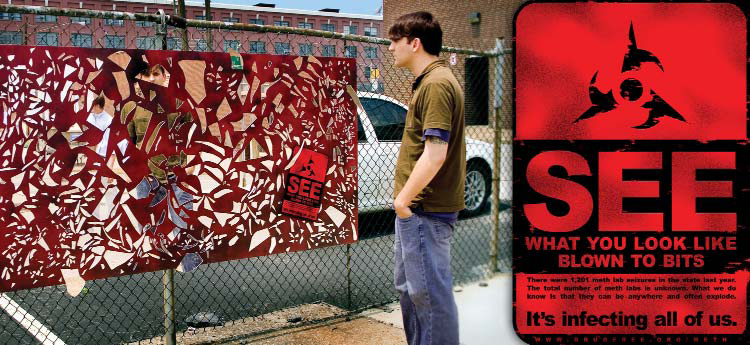
Download the PDF
<< Return to List